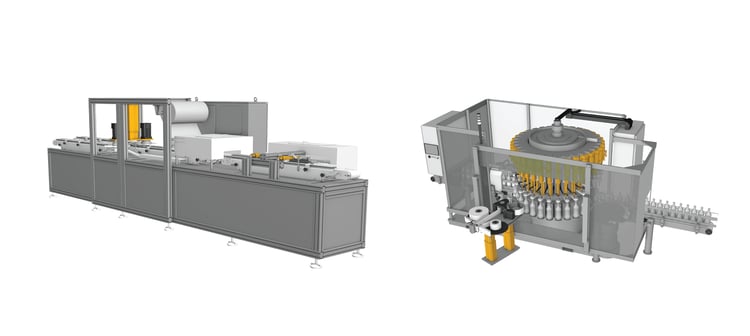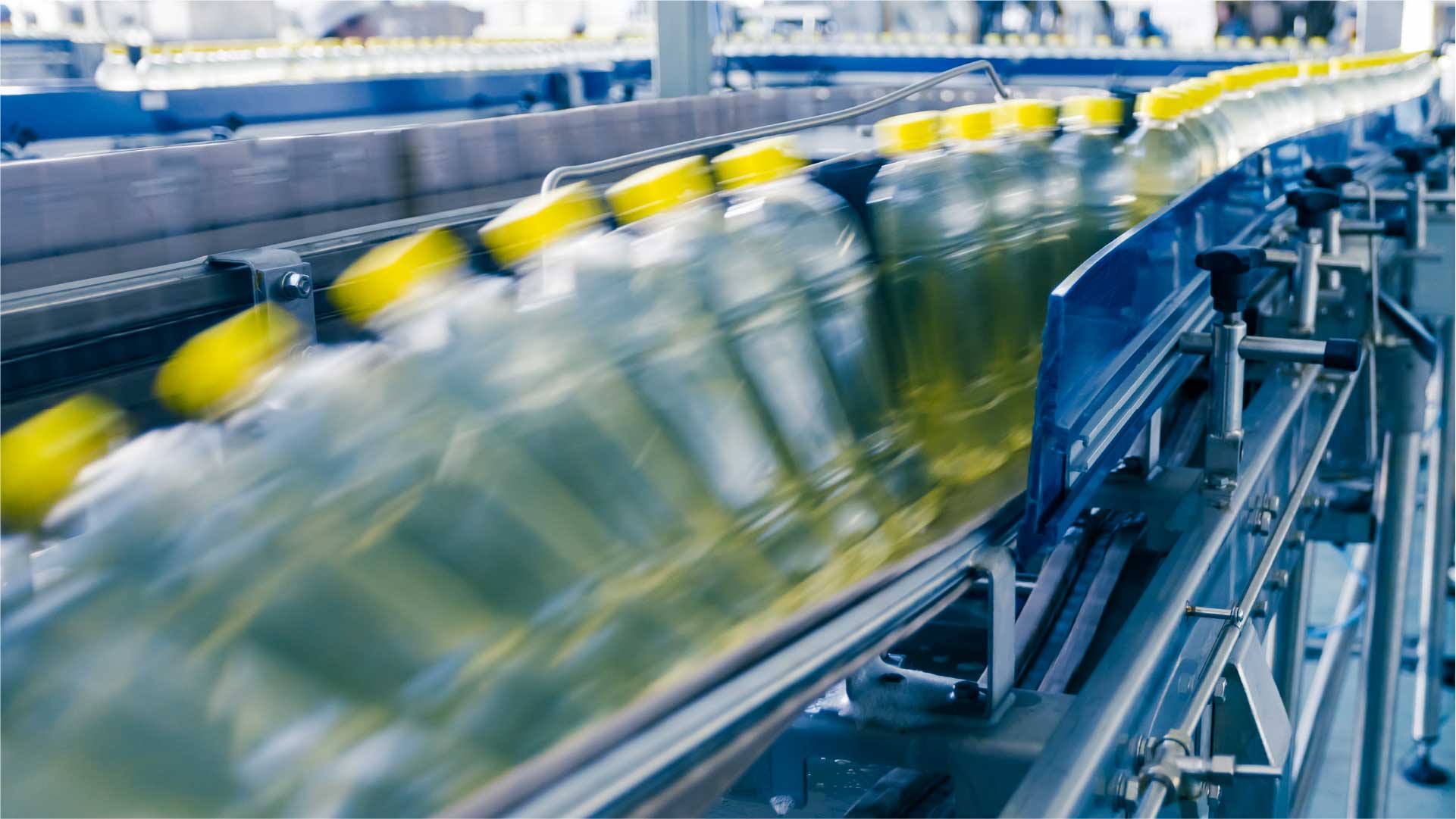Under pressure to improve productivity, agility and resource utilisation, the packaging sector is turning to advanced automation solutions. Its secret weapon? High precision electromechanical linear motion.
The modern economy consumes vast quantities of packaging. Almost every product requires packaging at some point in its journey from manufacture to end-use. Along that journey, packaging performs multiple roles: protecting goods in transport or storage, simplifying handling and providing essential information to users. Worldwide, companies spend almost $900 billion no packaging every year.
While they can’t seem to get enough of the stuff, packaging creates many challenges for companies. In retail, for instance, the spectacular growth of e-commerce has increased the volume of packaging consumed, the demands placed on that packaging, and the complexity of packaging management. And e-commerce fulfillment centres have to cope with highly variable, unpredictable demand from customers who expect products to arrive fast and in perfect condition.
Then there’s the sustainability challenge. Consumers, governments and environmental groups are becoming increasingly concerned about the impact of packaging on the natural world. Sent to landfill, plastic packaging can take hundreds of years to decompose, and if packaging waste isn’t properly managed, material can end up polluting the environment. Environmentalists predict that, at the current rate of accumulation, there will be more plastic than fish in the World’s oceans by 2050.
The packaging industry is responding to these challenges with a wide range of initiatives. Companies are developing new materials, new technologies and new business models in efforts to reduce costs, increase flexibility and optimise the utilisation of resources across the supply chain.
A New Wave of Automation
One area that is seeing significant innovation is in the application of advanced automation solutions. Automating previously manual packaging tasks helps companies to optimise the speed and productivity of their packaging operations, while adding new capabilities to already automated areas of the packaging value chain is unlocking improvements in efficiency, quality and flexibility. Overall, demand for packaging automation technologies is forecast to increase by 9.2 percent a year over the next five years, around three times faster than the packaging sector as a whole.
Packaging automation has seen some eye-catching developments in recent years, such as the introduction of robotics in warehouses and fulfilment centres, or the growing use of machine learning and artificial intelligence to technologies to optimise operations. Some of the most significant performance improvements, however, come from advances in the fundamental motion technologies that sit at the heart of modern packaging machines.
The Electromechanical Advantage
Companies are increasingly replacing the fluid power systems they have traditionally used to create linear motion with a new generation of electromechanical actuators. Powered by an electric motor, they are available in a wide range of standard designs, and in modular formats that allow power, speed and precision to be tailored for almost any conceivable application.
Electromechanical actuators provide many benefits in packaging applications. They provide:
1) Easy Integration
In machine designs, for example, they don’t require pipes, pumps, accumulators and other complex infrastructure.
2) Efficient Energy
Up to 80 percent of the input power turned into useful work.
3) Controllability
Perhaps their most compelling advantage, electromechanical actuators have a direct mechanical link between the motor and the screw that provides precise control and high levels of repeatability down to the micron level across their full range of motion.
Packaging Applications

Production of PET bottles
Mass reduction is a key performance goal as manufacturers seek to reduce product cost and resource usage. Handling thinner-walled bottles during the blow moulding process is extremely challenging, and production equipment must operate within a very precise performance envelope to minimise the risk of quality problems or product failures. The use of roller screws in this application can control the movement of the plastic preforms in the blow moulding process, allowing the motion of the preform to be optimally controlled throughout its cycle, while the high speed and acceleration offered by the actuators helps to maximise throughput.
 Food and drink packaging (left), filling and labeling (right)
Food and drink packaging (left), filling and labeling (right)
A major operational challenge is the need to work with an ever-wider range of packaging shapes, styles and sizes. Traditional packaging equipment requires manual re-setting every time the line is reconfigured for a different packaging type, a process which takes significant time, reducing productivity and limiting operational flexibility.
By incorporating electromechanical actuators and height adjustable pillars into their machines, manufacturers are now able to create designs that can be automatically and precisely re-set with a simple software signal. That change cuts downtime, reduces minimum economic batch sizes and eliminates the risk that re-setting errors will introduce quality problems or unplanned production stoppages.
Giving Robots Legs
Electromechanical actuators are increasing the capability and versatility of cutting-edge robotic systems too. One of the key recent innovations in the automation of downstream packaging applications has been the development of cobots (collaborative robots). These are robots designed with built-in safety features that allow them to work alongside human colleagues in mixed environments such as warehouses and fulfillment centres. Cobots are now taking on various packaging tasks, including box filling, labeling and pallet stacking.
Most cobots operate from fixed base, which restricts the space over which they can operate. That limits their ability to take on certain tasks, such as transporting objects across longer distances, or handling at height. To overcome this, users are now installing their cobots on moving platforms, powered by electromechanical actuators.

Ewellix LIFTKIT : an efficient and a smart solution for vertical
height adjustment with an additional ready-to-install linear axis.
Vertical pillars using a telescopic design can be floor or ceiling mounted to allow a co-bot to work at any required height. That capability is particularly useful in pallet-stacking applications, which may require the robot to work anywhere from floor level to a height of 2 meters or more. Horizontal linear modules, meanwhile, allow cobots to move along a packaging line to work at different stations, or to move automatically between machines. In either case, the precision inherent and rigidity of electromechanical actuators is a critical part of the system, ensuring the robot is stable and properly positioned for every task.
Electromechanical Actuator: A Key Ingredient in Automation
The global packaging industry is under pressure to control costs, improve productivity and reduce its environmental impact. Modern high-precision electromechanical actuators are a key ingredient in an emerging generation of smarter, more flexible automation solutions that are helping the industry to achieve its goals.
Interested to know more about Linear Motion Automation Solutions?
Regardless of the industry you're in, we are here to help you find the right type of solutions when it comes to your automation needs. If you would like to learn more, please get in touch with us below:
 Ewellix is a global innovator and manufacturer of Linear Motion and Actuation solutions used in industrial automation, medical applications, mobile machinery and distribution. Formerly part of SKF Group, the Ewellix Group consists of 16 sales units and nine factories. External net sales are approximately 2.3 SEK billion and we employ around 1400 people. Ewellix is headquartered in Gothenburg, Sweden and is owned by Triton Partners.
Ewellix is a global innovator and manufacturer of Linear Motion and Actuation solutions used in industrial automation, medical applications, mobile machinery and distribution. Formerly part of SKF Group, the Ewellix Group consists of 16 sales units and nine factories. External net sales are approximately 2.3 SEK billion and we employ around 1400 people. Ewellix is headquartered in Gothenburg, Sweden and is owned by Triton Partners.
**All images were derived from Ewellix







